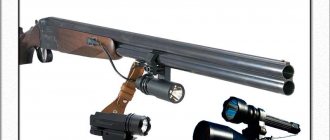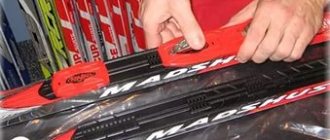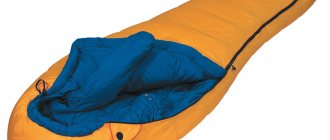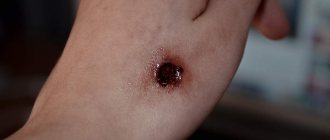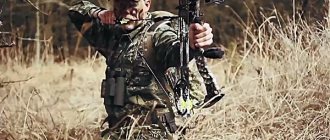Our society is considered civilized and safe, but many still prefer to buy firearms and bladed weapons as a means of self-defense. The simplest is considered to be a knife as a weapon of self-defense. To purchase it, permits are not required, as when purchasing a pistol or shotgun. True, in order for the blade to really protect you from intruders, you need to know how to use it.
In this article we will consider not only the features of edged weapons as a means of self-defense, but also the features of their use for self-defense.
How to use a knife as a self-defense weapon
Not every knife is a bladed weapon. Most blades are freely available. Moreover, travel, kitchen and other options can be transported freely. In other words, blades are not considered dangerous until they are used as weapons. If it was used in battle or combat, even for self-defense, legally the blade is equated to a bladed weapon, but legally this is a completely different story (Figure 1).
According to current legislation, not only firearms, but also bladed weapons are subject to mandatory registration. Accordingly, any actions, including self-defense with a knife, can lead to problems with the law.
Unfortunately, it is not always possible to avoid conflict, and in order to protect yourself from intruders, you still have to use a knife. The main rule is not even how you will use it, but whether you can prove that you were actually defending yourself and not attacking.
Figure 1. Edged weapons are considered especially dangerous
In this case, street CCTV cameras or even DVRs from cars parked nearby can help. If the area is deserted and you still have to defend yourself, you need to turn on the camera on your phone or at least record sound. In the future, this will help prove the very fact of self-defense and explain the use of a knife.
Knife for urban self-defense
The so-called “knife fight” is still widely known in very narrow circles. But there is progress, competitions are being held (so far relatively few in number), exhibitions are being organized, and this topic is being discussed on forums. In general, knives are gradually becoming popular. One might even say that a subculture of so-called “nayfomaniacs”—or knife makers—has already emerged.
Is it good or bad? On the one hand, it is certainly good that men are interested in weapons. And not just weapons, but decorated, interestingly made weapons. This contributes to the development of male character and worldview - when weapons are a symbol of status, etc. On the other hand, the disadvantages of the phenomenon are so great that they can outweigh all the advantages and disadvantages. And lead to a dangerous extreme.
The disadvantage, first of all, is that no weapon - the sharpest, the best, the most beautiful - will make a person a man in the full sense and scope. Unfortunately, in our time, due to a lack of paternal education, many guys lack the necessary properties and qualities of character. And instead of strengthening their spirit, working on their inner content, they buy into external, beautiful attributes and think that a “cool” knife will make them “cool” themselves. But this is absolutely not true.
A knife can't give you confidence. “It’s not the weapon that kills, but the man,” says the principle of Russian hand-to-hand combat. The main thing is not what kind of knife you have in your hand, but whether you can use it. Will you be able to cross the threshold and use the weapon?
An unprepared person with a knife in his hands can be dangerous if he is not in good mental health. But if his character is not tempered, even a grenade launcher in his hands will not help him. The problem is that many guys who don’t think about it believe that by buying a knife, they have already protected themselves, they have fully worked out everything they need. They do not think about the most banal, simplest things.
The first is the ability to use, to step over the internal threshold, to use a weapon against a living person. It's not as simple as it seems. Be that as it may, humans have a certain internal prohibition against intraspecific aggression; the situation of using weapons is extreme for humans. Even just sticking a knife into a person’s leg in the case of street self-defense is not so simple. For some reason, few people think about this question. In the same way, owners of traumatic weapons do not practice quickly snatching them. They think that just having a gun in their pocket will keep them safe.
It is not enough to have a weapon, you need to be able to use it.
In traditional society, the most important thing was not technology, but psychological readiness to use edged weapons. It remains so today. The most important thing is the ability to use a knife against a living person. Cut it, or stick a blade into it. Think about whether you can do this if the need arises (someone attacks you)? Just be honest, to yourself.
In a traditional society, children participated in the slaughter of livestock, which also taught them the sight of blood, gave them the ability to cut a living creature, and so on.
And no amount of “tests”, when they try to pierce some pork carcass wrapped in clothes with knives, contributes to the development of this skill. The maximum that can help is participation in the slaughter of livestock.
One more thing - some “knife makers” try to develop a strong grip, to hit with their knife as if their task is to pierce not a jacket, or even a leather jacket, but a knight’s armor. But the fact of the matter is that a knife is a weapon that, when wielded, you can kill a person with a light touch by cutting his vein, cutting his throat, etc.
Therefore, knife fighting is a very ambiguous phenomenon. Moreover, now such delights as “sports knife fighting” have appeared, which in itself is absurd. Since knife fighting is intended only for the street. This is a purely applied discipline that has absolutely nothing to do with sports. Why do you need to be able to compete in a conventional fight according to the rules, on the court, as if it were a sports discipline?
The second point is that on the street no one will ever jump in a duel a la the musketeers and the cardinal’s guards. On the street, a person, wanting to stab another person, will approach him at an extremely close distance (remember the principle of “distance control”) and only then will he use a bladed weapon. Standing close.
It is impossible to imagine a situation where two people simultaneously pull out a bladed weapon, while they are at some distance and begin some kind of duel.
A good way to practice is not a conventional duel, but an exercise where one partner tries to hit the second with a dummy knife, while at the same time defending himself from the second’s attack with the other hand (also with a dummy). There is a mutual work going on: to prevent yourself from being cut, and to prevent your partner from being cut.
You should always consider the street situation as realistically as possible, watch videos of knife fights on the street (of which there are plenty now), and not believe everyone.
One more point that we should not miss. All these designer knives are very expensive. And they seem to take money for the unprecedented sharpness of the blade, the original shape of the blade, which is supposedly especially combative and gives a special advantage, but this is all at least funny. Most crimes are committed with an ordinary kitchen knife (about 70%). In order for a knife to be a combat knife, it does not have to have some kind of mother-of-pearl handle, or some unusual blade, or be made by hand from special steel. Any knife can kill - you can kill with a pocket knife.
In fact, blacksmiths charge a lot of money not for their product, but for the legend they sell to the buyer - self-confidence. They convince the buyer that by owning such and such a knife, you will become completely protected, confident, and “cool.” But this is absolutely not true. Only his inner self-confidence can make a person cool. Without it, not a single knife in the world will help him.
Although, you need to have a permitted weapon. You don't have to worry about special blades. You can perfectly use the most ordinary knife without creating a cult out of it.
The third question is a generally accepted stereotype: knife blows can be repelled. In order to check whether it is really possible to repel a sudden attack with a knife, conduct an experiment. This fun exercise game is called "Maniac on a Tram" (see description below). The questions will disappear by themselves.
— Exercise “Maniac on a tram”: Everyone stands in a circle. Everyone has a dummy knife in their belt, but only one (or two) will be able to use it. The “Maniac” is appointed by the coach so that others do not know about it. At the trainer’s signal, the “maniac” snatches the model and begins to strike randomly at everyone (the action seems to take place in a confined space). The presence of two or more “maniacs” will make the exercise especially fun.
This exercise will give you an understanding that sometimes “knife” strikes cannot be repelled even if you know about the attack in advance. Does this happen often?
— Protection from a knife, stand with a knife In the event that there is at least some opportunity and time for protection, you need to use your outerwear (jacket, etc.) in two options:
1. If time permits, you can wrap the jacket around the elbow of your left hand (if you are right-handed). Holding the jacket with the palm of your left hand, wrap it tightly like a rope around your elbow and secure the end again with your left palm. This will help repel enemy strikes with a knife. The same method can be used to protect against bites from dogs and other predatory animals. A jacket wrapped around your arm is, of course, not a shield, but it will help.
2. Simply grab the jacket with your left hand and hold it, covering your body. Firstly, the enemy’s knife may get stuck in the jacket (especially if it is thick enough). Secondly, you can wave your clothes in front of your opponent's eyes to distract his attention. And carry out your technical action. If you don’t have a jacket, you can at least use a hat, which on one side can also be used to catch a knife, on the other, you can poke it in the enemy’s eyes, or even throw it in his face so that he closes his eyes for at least a second. If you are experienced enough and want to live, this second will be enough for you to at least knock him out.
Notes: - In this case (if you are right-handed), place your left foot forward and your right foot back in both versions. Hold your knife (or whatever you have at hand) in your right hand. Even if you don't have a knife, you can use a jacket or hat to block your opponent's knife hand so you can get close to him and "neutralize" him with your free hand. Of course, it can injure your hand with the jacket. But what is more valuable - your life or your hand (which can be healed)?
- If you don't have anything at all that can be used as protection, but you have a knife, put your right foot forward and hold the knife in your right hand. This way you will protect your body from wounds - the enemy will have to reach too far, especially since your hand with a knife will be protecting the lines. Weapons or limbs that can strike, as if creating a protective circle that protects the body. Whether in an unarmed fight or in a fight with a weapon, you need to somehow get through this protective circle and get to the goal - the person himself. By holding a “shield”, you create your own “protective sphere”, and in turn try to break through your opponent’s defense.
— Concealed Carrying Weapons Capitalizing on mental stereotypes gleaned from cool Statham action movies, some self-defense dealers are selling all sorts of cool concealed carry weapon belts that look like elaborate suspenders with sheaths hanging in unexpected places. They are worn under your clothes so that, say, some nightclub security guard cannot detect a knife on you. All this, of course, looks very cool, but if you are attacked on the street or in another place, and you fight back, but you are detained by the employees of those same authorities, such a system on your body is a very big disadvantage for you. The thinking of employees has not changed since Soviet times. They will begin to perceive you not as an ordinary person who was attacked, but as a killer who himself was preparing for an attack (or even murder). Whatever you say, whatever the circumstances of the case, in the eyes of the blind Themis you will be evil.
— For street self-defense, a long, large key to an iron door is enough. With this key you can scratch the face or forehead of your opponent(s), which will be quite enough. Firstly, the shock of blood pouring into the eyes will cool their ardor, and secondly, the blood loss may be enough for the aggressors to go to intensive care (a real case, and a girl successfully fought off an attack by two people). You can also use a common screwdriver.
Hit the attacker's forehead with the key - draw a line over the forehead with force so that blood floods the eyes. After this, you can also scratch your face crosswise.
Signs of edged weapons
Not every blade is considered a melee weapon. The current legislation absolutely clearly states the criteria that a blade must meet for self-defense.
This level of detail is explained by the fact that knives are widely used in everyday life, and even an ordinary kitchen or table knife can become a means of accidental or intentional murder.
There are three main types:
- Combat:
can be manual or rifle. The main area of use is the performance of combat and service-operational tasks by the military or law enforcement officers. Such models can only be found in the arsenals of military organizations. - Service:
a subtype of combat, which is usually issued to law enforcement officers and government employees. - Civil:
this type includes tourist, sports and hunting models. Any adult can obtain permission to wear them.
Figure 3. Not any blade is considered a bladed weapon.
To determine whether a knife is a bladed weapon, several factors should be taken into account. Firstly, the characteristics of the blade itself are taken into account. Not only the length and sharpness of the blade are taken into account, but also the degree of sharpening and thickness (Figure 3).
Secondly, ownership depends on the shape and type of its handle. An experienced specialist will be able to determine the purpose of a particular blade by the shape of the handle, and therefore the scope of its use.
You can determine that a blade is a dangerous bladed weapon by the following criteria:
- The end of the blade is sharpened to make it easier to inflict puncture wounds.
- The tip is located a maximum of 5 mm above the butt line, while the total length of the blade exceeds 9 cm and the thickness is 6 cm.
- The blade is well sharpened and has a special hook for ripping through flesh.
In addition, real edged weapons that can cause damage must be made of high quality steel.
What kind of knife should be for self-defense?
Self-defense knives , like any other knives with a specific focus, must have a number of parameters that are fully capable of providing the functions assigned to them:
- sizes. This self-defense must have excellent cutting quality, while not contradicting the norms regulated by law: blade length no more than 9 cm, cutting surface thickness no less than 2.6 cm. Mandatory rigid fixation of the blade, the presence of a recess for the finger and a stop;
- shape of the knife (blade and handle). For self-defense purposes, the best options are the drop point (lowered butt line), tanto and S-shape. The handle should be comfortable, not massive. The knife should fit easily in the palm of your hand and not slip out;
- blade material. The steel for the blade must be hard and non-brittle (more than 55 HRC). However, it must be taken into account that the type of steel directly affects its cost;
- handle material. Any type of material that does not add significant weight to the tool and has high anti-slip properties is suitable.
How to get permission
In Russia there is a clear law that defines the scope of using a knife as a bladed weapon for self-defense. For example, it is prohibited to carry, sell and store models with retractable blades and quick release functions. Products with a blade length of more than 90 cm are prohibited.
To wear such a product, a permit is required, to obtain which you must provide a package of certain documents to the police.
To obtain official permission, you must provide:
- Passport of a citizen of the Russian Federation;
- Certificate of medical examination;
- Certificate of no criminal record;
- Receipt for payment of state duty;
- A certified inspection report of the place where the product will be stored;
- Statement;
- Two 3x4 photographs.
After receiving permission, only the person for whom it was issued can store and use the blade. Any transfer of a knife to third parties is considered illegal and is punishable in accordance with the Criminal Code of the Russian Federation.
What to look for when choosing a knife?
{module 277}
The knife should be comfortable
The most important thing is that the knife must sit well and confidently in the hand; your hands sweat from excitement and there is a risk of it jumping off the handle upon impact and cutting all your fingers. Therefore, when buying a knife, always try it on your hand. At the same time, the material of the handle is not of fundamental importance; here you should choose based on your feelings and taste.
Availability of blade lock
If you buy a folding knife, then it must have a blade lock and the stronger the lock, the better. Otherwise, the blade may fall on your fingers when trying to self-defense, in which case you yourself will suffer even more from your own knife. Therefore, always pay attention to this.
Blade material
The material of the blade is actually not that important, of course it shouldn’t be like cardboard that will break in half at the first blow, well, you’re not going to buy yourself a knife on the Chinese market for 50 rubles? So you have nothing to worry about.
Main selection criteria
If you nevertheless decide that a knife is the ideal means of self-defense for you, you should keep in mind that you should choose a bladed weapon according to certain criteria (Figure 4).
High-quality blades must meet several requirements:
- Blade quality:
The best knives are made from steel. It is this indicator, and not the quality of the handle, that plays the key role. As for the handle, it should simply fit comfortably in the hand and be tight so that the blade does not become loose from intensive use. - Form:
this indicator depends on self-defense tactics. For example, there are models whose blades are specially sharpened for piercing or cutting blows. In this case, the choice is determined purely individually. - Ease of use:
it is important that the knife is not too bulky, and that it can always be carried with you, unnoticed by others. In this case, the length of the blade should be large enough, but within the limits permitted by law.
Figure 4. When choosing a weapon, attention should be paid to the quality of the blade and the comfort of the handle.
For all the indicators discussed above, it is better to give preference to folding models, and select the shape of the handle and blade individually.
How to choose an EDC knife for self-defense and carrying every day
Many people, especially those interested in weapons or self-defense topics, ask themselves the question: which knife should they choose to carry constantly as a means of self-defense?
Answering this seemingly quite simple question is as difficult as giving all people one general advice on choosing clothes or a car. As you might guess, the single best and most universal knife, equally suitable for everyone, simply does not exist. But today we’ll talk about how to choose a similar EDC knife for self-defense “for yourself.”
EDC knife for self-defense: fixed or folded?
This question when choosing a self-defense knife is one of the most popular and exciting. Proponents of both types give their arguments (for example, in favor of the “indestructibility” of fixed blades as opposed to folding knives), but in reality everything is much simpler.
You should choose a knife based on the length of its blade, because this parameter, perhaps, is in the very first place when choosing a knife for self-defense (we’ll talk about what exactly this length should be below).
As for the “survivability” of folding knives, most modern models are not much inferior to knives with a fixed blade and are guaranteed not to let you down in any critical situation. In addition, carrying a folder is much easier (just put it in your pocket), and it is less attractive to police officers if they are discovered.
Lock type
If you decide to choose a folding knife, then the first thing you should pay attention to is the type of lock. A folder with a weak lock may well lead to involuntary (during an impact) folding of the blade and injury to the fingers.
That is why preference should be given to reliable designs that are guaranteed to protect against accidental folding. In addition, it is highly advisable to give preference to models whose reliability has been proven by practical tests (such as products from Cold Steel and a number of other companies).
Opening mechanism
It goes without saying that a folding knife used as a means of self-defense must have almost instantaneous opening. It is for this reason that you should refuse to purchase knives (specifically for these tasks) that have “two-handed” opening, nail hooks or small pegs.
Preference should be given, on the contrary, to models with quick opening - knives equipped with a “fin”, “wave” or, moreover, folders with an assist.
You should not purchase knives with fully automatic opening for a number of reasons, namely, their relation to the chemical weapons category with a long blade length, danger when worn regularly (if the knife is not equipped with an additional safety lock) and low reliability of budget models.
Knife/blade length
The total length of the knife (or the length of the blade in the case of folders) directly depends on the owner’s parameters - the greater the height, the larger blades should be preferred, as well as the region of residence and the season.
In the latter case, you should be guided by ease of wearing and inconspicuousness.
So, if in the northern territories in winter you can secretly wear a fairly weighty fixed blade under clothes, then in the south in the summer such a blade will immediately attract the attention of passers-by (and employees of the relevant authorities).
Blade shape
When choosing a blade shape, you should be directly guided by personal habits and convenience. So, if the most common knife for your work is a knife with a drop-point blade, then you should purchase it as a self-defense tool.
If we talk about general recommendations, then, according to the majority of American experts, the most preferable blades for knife fighting are those with a direct RK, for example, American Tanto or Wharncliff style knives.
They provide maximum control of both cutting and piercing blows (the latter, at the same time, are as deep as possible and comparable to injections from a dagger).
